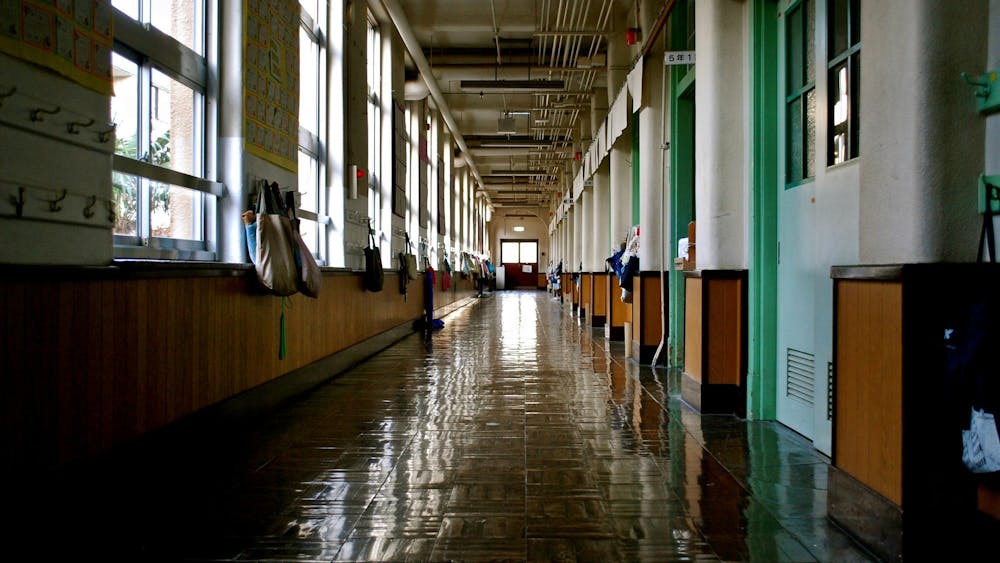Notre Dame’s mission statement includes the following: “The University prides itself on being an environment of teaching and learning that fosters the development in its students of those disciplined habits of mind, body, and spirit that characterize educated, skilled, and free human beings.”
To that end, the University takes actions to integrate these different facets of wellness into student life as seamlessly as possible. For example, nearly every University building has at least one chapel in it. If I want to pray alone, I have 57 chapels to pick from and that large, cave-like structure with the candles in it down by the lakes. If I want to pray with others, I can go to one of over 100 Masses on campus each week, or join one of 10-plus campus ministry groups representing all different faith traditions. Or I can put faith into action through hundreds of programs offered by the Center for Social Concerns and other places on campus. In short, the spiritual practices of the Notre Dame student are covered.
We prioritize physical fitness here as well. If I have the urge to work out, I can walk down the stairs to the St. Ed’s exercise room and find a bench, free-weights, exercise ball, pull-up bar, stationary bike and treadmill. If I want to blast my pecs more publicly, I can go to one of our two recreation centers. If it’s nice outside and I feel like doing cardio, there are two lakes circled by a track of a really convenient mileage.
Notre Dame has no doubt created an environment where “disciplined habits of mind, body, and spirit” can form. What I question, and what I believe threatens the “educated, skilled, and free” half of the commitment, is the University’s ability to ensure the positive mental health of its students with the structures it currently has in place. It is uncontroversial that mental health is not equivalent to intellectual prowess. There are unhealthy body builders just as there are spiritually vacant church-goers. By the same token, there are a host of immensely talented and gifted students on this campus who struggle with depression, low self-esteem, body image issues, high stress, their sense of self-worth or identity, unmet expectations, and other similar afflictions, and do so largely in silence.
This is not to say that we can expect the University to ensure that every student walk around 100 percent happy, 100 percent of the time, any more than we can expect every person here to be built like a Polo model. However, Notre Dame can create an environment in which caring for one’s mental health is as native, accessible, and socially acceptable as a run around the lakes. In this area, I am convinced that ND can do better.
One shortcoming and possible starting point for improving the University’s mental health efforts is the “Inner Resources Room” (IRR). The Inner Resources Room, for those who have never heard of it, is a room administered by the University Counseling Center (UCC) with a massage chair, light therapy, relaxing CD/DVD soundtracks (e.g. waves or chirping birds) and other stress relief paraphernalia. Students can sign up for 10- or 20-minute sessions, free of charge, to lay down in a massage chair and “let go” for a bit.
Predictably, most people who hear about the IRR are pretty enthusiastic about the prospect of a free 20-minute massage and the relief it promises. Equally predictable is the tepid reaction people have on hearing the IRR’s location.
The Inner Resources Room is located on the third floor of St. Liam’s Hall. While, administratively speaking, it may seem more convenient to have it near the UCC, in practice, it just means that few students go and fewer students talk about it. St. Liam’s is a place we associate with sinus infections and waiting. Despite the gothic architecture and very friendly staff, it has an unmistakable “clinical” feel to it. These are negative associations. Moreover, since visiting the IRR is clearly in the category of preventative measures in the same way that jogging and Cheerios help prevent heart disease, there is no conceivable reason why this zone of mystic, stress-reducing Zen must necessarily be confined to the cold atmosphere of a clinic. The indoor track is in Rolfs, not St. Liam’s.
My suggestion, then, is to create duplicates of the Inner Resources Room in LaFortune and the Library, preferably on the first or second floors of both. Mental health is a sadly under-addressed need among the student body. Whatever the sources, the tools to prevent a greater number of students from succumbing to distress and disorder are within the financial and administrative capabilities of our school. Placing additional IRRs in more central and heavily trafficked areas would be a step in the right direction if we intend to make care for one’s mental health as ingrained and socially-reinforced as care for other aspects of Notre Dame student life.
Alex Caton is a junior living in St. Edward’s Hall. He can be contacted at acaton@nd.edu
The views expressed in this column are those of the author and not necessarily those of The Observer.













